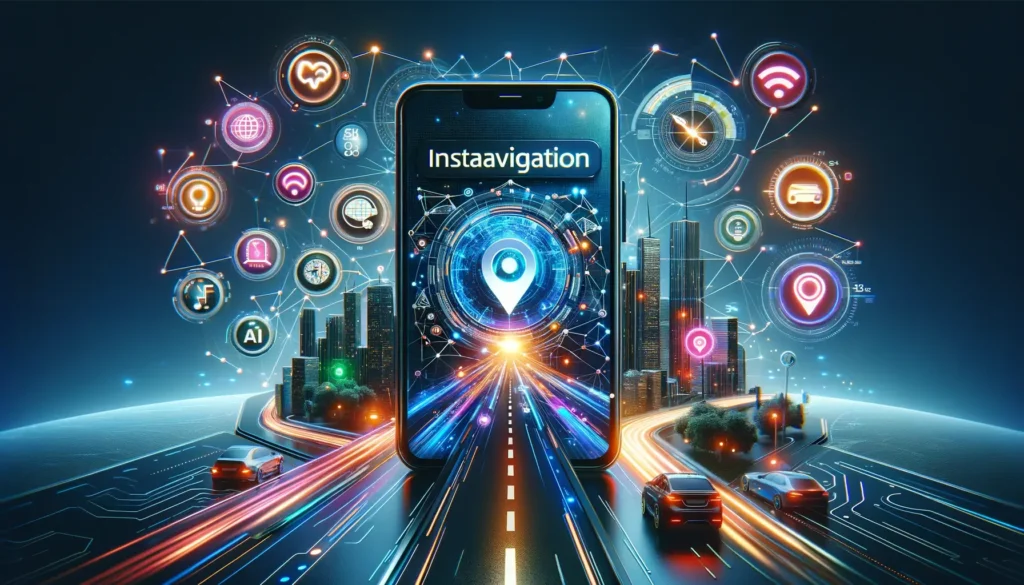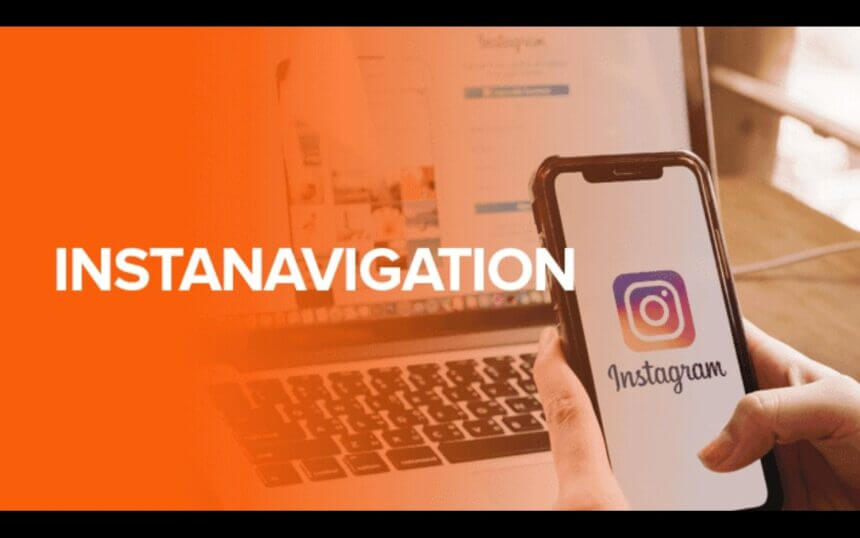In the age of information and instant gratification, the way we navigate through our daily lives has been transformed dramatically. Gone are the days of relying solely on physical maps, compasses, or even asking a passerby for directions. Today, we have the power to navigate through almost anything with just a few taps on our smartphones. This evolution has culminated in what can be termed as “InstaNavigation”—the instant, efficient, and user-friendly method of finding our way in a complex world.
InstaNavigation isn’t just about getting from point A to point B; it’s a broader concept that applies to various aspects of our lives. It encompasses navigating through physical spaces, digital landscapes, social networks, and even the intricate pathways of our personal and professional development. This article delves into the different dimensions of InstaNavigation, exploring how it has become an integral part of our daily existence, its technological underpinnings, and its impact on society.
1. The Genesis of InstaNavigation
To understand InstaNavigation, it’s essential to trace its origins. Navigation as a concept has been integral to human survival and progress. From ancient mariners using the stars to guide their ships to early explorers charting unknown territories, the ability to navigate has always been a critical skill.
However, the real game-changer came with the advent of Global Positioning System (GPS) technology. Initially developed by the United States Department of Defense in the 1970s, GPS was designed for military purposes. It wasn’t until the late 20th century that GPS became widely available to the public, revolutionizing the way we navigate the world.
With the proliferation of smartphones and mobile internet in the 21st century, navigation became accessible to the masses. Apps like Google Maps, Apple Maps, and Waze have made it possible for anyone with a smartphone to find their way anywhere in the world. This was the dawn of InstaNavigation, where information about location and direction became instantly available at our fingertips.
2. The Role of Technology in InstaNavigation
At the heart of InstaNavigation lies advanced technology. Several key technological developments have made InstaNavigation possible, each contributing to the seamless and instant nature of modern navigation.
2.1. Global Positioning System (GPS)
GPS remains the backbone of InstaNavigation. This network of satellites provides real-time location data to devices worldwide. By triangulating signals from multiple satellites, a GPS receiver can determine its precise location on Earth. This technology is the foundation for most navigation systems we use today, enabling everything from turn-by-turn directions to real-time traffic updates.
2.2. Geographic Information Systems (GIS)
GIS technology plays a crucial role in mapping and analyzing spatial data. It allows for the creation of detailed maps that include not just physical locations but also information about the terrain, infrastructure, and even social and economic data. GIS is what enables apps like Google Maps to provide detailed information about your surroundings, such as nearby restaurants, landmarks, and public transport options.
2.3. Artificial Intelligence (AI) and Machine Learning
AI and machine learning are integral to the evolution of InstaNavigation. These technologies allow navigation systems to learn from user behavior, traffic patterns, and other data to provide more accurate and personalized directions. For example, AI-powered algorithms can predict the fastest route to your destination based on current traffic conditions, historical data, and even weather forecasts.
2.4. Augmented Reality (AR)
AR is another exciting development in InstaNavigation. By overlaying digital information onto the real world, AR enhances our perception of our surroundings. This technology is being used in navigation apps to provide more intuitive directions. For instance, instead of just following a line on a map, AR can display arrows and markers directly onto your phone’s camera view, guiding you in real-time as you walk or drive.
2.5. 5G Connectivity
The rollout of 5G networks is set to take InstaNavigation to the next level. With faster data speeds and lower latency, 5G will enable even more real-time data processing and communication. This will improve the accuracy and responsiveness of navigation systems, making them more reliable and efficient.

3. Applications of InstaNavigation
InstaNavigation is not limited to just finding your way on the road. Its principles and technologies are being applied in various fields, each benefiting from the instant and precise nature of modern navigation.
3.1. Urban Mobility
InstaNavigation has revolutionized urban mobility, making it easier for people to move around cities efficiently. Ride-sharing services like Uber and Lyft rely heavily on GPS and real-time data to match drivers with passengers and navigate through busy city streets. Public transportation systems also benefit from InstaNavigation, with apps providing real-time updates on bus and train schedules, delays, and alternative routes.
3.2. Logistics and Supply Chain Management
The logistics and supply chain industry has seen significant improvements thanks to InstaNavigation. Real-time tracking of shipments, optimization of delivery routes, and efficient fleet management are all made possible by advanced navigation technologies. This not only reduces costs but also improves delivery times and customer satisfaction.
3.3. Emergency Services
For emergency services, every second counts. InstaNavigation allows first responders to reach their destinations quickly and efficiently. GPS and real-time traffic data help ambulances, fire trucks, and police vehicles navigate through traffic and find the fastest routes to the scene of an emergency. In some cases, drones equipped with GPS and cameras are being used to assess situations and deliver supplies in hard-to-reach areas.
3.4. Tourism and Travel
InstaNavigation has transformed the way we travel and explore new places. Tourists can now navigate unfamiliar cities with ease, find attractions, and even discover hidden gems off the beaten path. Language barriers are also less of an issue, as many navigation apps include translation features and local recommendations.
3.5. Smart Homes and IoT
InstaNavigation is extending its reach into our homes through the Internet of Things (IoT). Smart home devices, such as robotic vacuum cleaners, use navigation technologies to map and clean your living space efficiently. GPS and Wi-Fi positioning are also used in home automation systems to trigger actions based on your location, such as turning on lights or adjusting the thermostat when you arrive home.
4. The Impact of InstaNavigation on Society
The rise of InstaNavigation has had profound effects on society. While the benefits are clear, there are also challenges and potential downsides that need to be addressed.
4.1. Convenience and Efficiency
The most apparent benefit of InstaNavigation is the convenience it offers. Whether you’re driving, walking, or using public transport, InstaNavigation makes it easier to get where you need to go. This efficiency saves time, reduces stress, and increases productivity in both personal and professional contexts.
4.2. Accessibility
InstaNavigation has also made the world more accessible. People with disabilities, for example, can use navigation apps to find accessible routes and facilities. In addition, those who are new to an area or not proficient in the local language can navigate with confidence, reducing barriers to mobility.
4.3. Environmental Impact
By optimizing routes and reducing the time spent in traffic, InstaNavigation can help reduce fuel consumption and lower greenhouse gas emissions. Ride-sharing and public transport apps encourage the use of more sustainable modes of transportation, contributing to a reduction in the overall carbon footprint.
4.4. Data Privacy and Security Concerns
As with any technology that collects and processes data, InstaNavigation raises concerns about privacy and security. Navigation apps often track users’ locations, raising questions about how this data is used and who has access to it. There is also the risk of data breaches, which could potentially expose sensitive location information.
4.5. Dependency and Skill Erosion
One of the potential downsides of InstaNavigation is the risk of becoming overly dependent on technology. As we rely more on GPS and navigation apps, there is a concern that we may lose our ability to navigate without them. The skill of reading physical maps, understanding spatial relationships, and using natural landmarks for orientation may diminish over time.
5. The Future of InstaNavigation
As technology continues to evolve, so too will InstaNavigation. Several emerging trends and developments suggest that the future of navigation will be even more advanced, personalized, and integrated into our daily lives.
5.1. Autonomous Vehicles
One of the most exciting prospects for the future of InstaNavigation is the development of autonomous vehicles. Self-driving cars rely on a combination of GPS, AI, and sensors to navigate roads and traffic without human intervention. As this technology matures, it has the potential to revolutionize transportation, making it safer, more efficient, and accessible to all.
5.2. Advanced Augmented Reality
While AR is already being used in navigation, future advancements could make it even more immersive and intuitive. Imagine wearing AR glasses that provide real-time navigation instructions directly in your field of vision, guiding you through complex environments like airports, shopping malls, or even outdoor trails.
5.3. Integration with Wearable Technology
Wearable devices, such as smartwatches and fitness trackers, are becoming increasingly sophisticated. Future InstaNavigation systems could integrate seamlessly with these devices, providing real-time directions, notifications, and updates directly to your wrist. This could be particularly useful for outdoor activities like hiking, cycling, or running, where hands-free navigation is essential.
5.4. Smart Cities
The concept of smart cities is closely linked to InstaNavigation. As urban areas become more connected through IoT, navigation systems will be able to access real-time data on traffic, public transport, weather, and events. This will enable more dynamic and responsive navigation solutions that adapt to changing conditions in real-time.
5.5. Ethical Considerations
As InstaNavigation technology becomes more advanced, ethical considerations will come to the forefront. Issues such as data privacy, algorithmic bias, and the environmental impact of new technologies will need to be addressed. There will also be a need for regulations and standards to ensure that navigation systems are safe, reliable, and equitable.
Read more: https://chesterpress.co.uk/judge-jeanine-left-eye-a-deep-dive-into-the-speculations-and-facts/
6. Conclusion
InstaNavigation has fundamentally transformed the way we navigate the world. From finding the quickest route to a meeting to exploring new cities, this technology has made our lives more convenient, efficient, and connected. As it continues to evolve, InstaNavigation will likely become even more integrated into our daily lives, offering new possibilities and challenges.
However, as with any technological advancement, it is essential to approach InstaNavigation with a balanced perspective. While the benefits are clear, we must also be mindful of the potential downsides, such as data privacy concerns and the erosion of traditional navigation skills. By doing so, we can harness the power of InstaNavigation to improve our lives while mitigating its risks.
In the end, InstaNavigation is more than just a tool—it’s a reflection of our desire for instant access to information and our need to navigate an increasingly complex world. As we move forward, it will be fascinating to see how this technology continues to shape our interactions with the world around us, guiding us not just to our destinations but also toward a more connected and efficient future.


